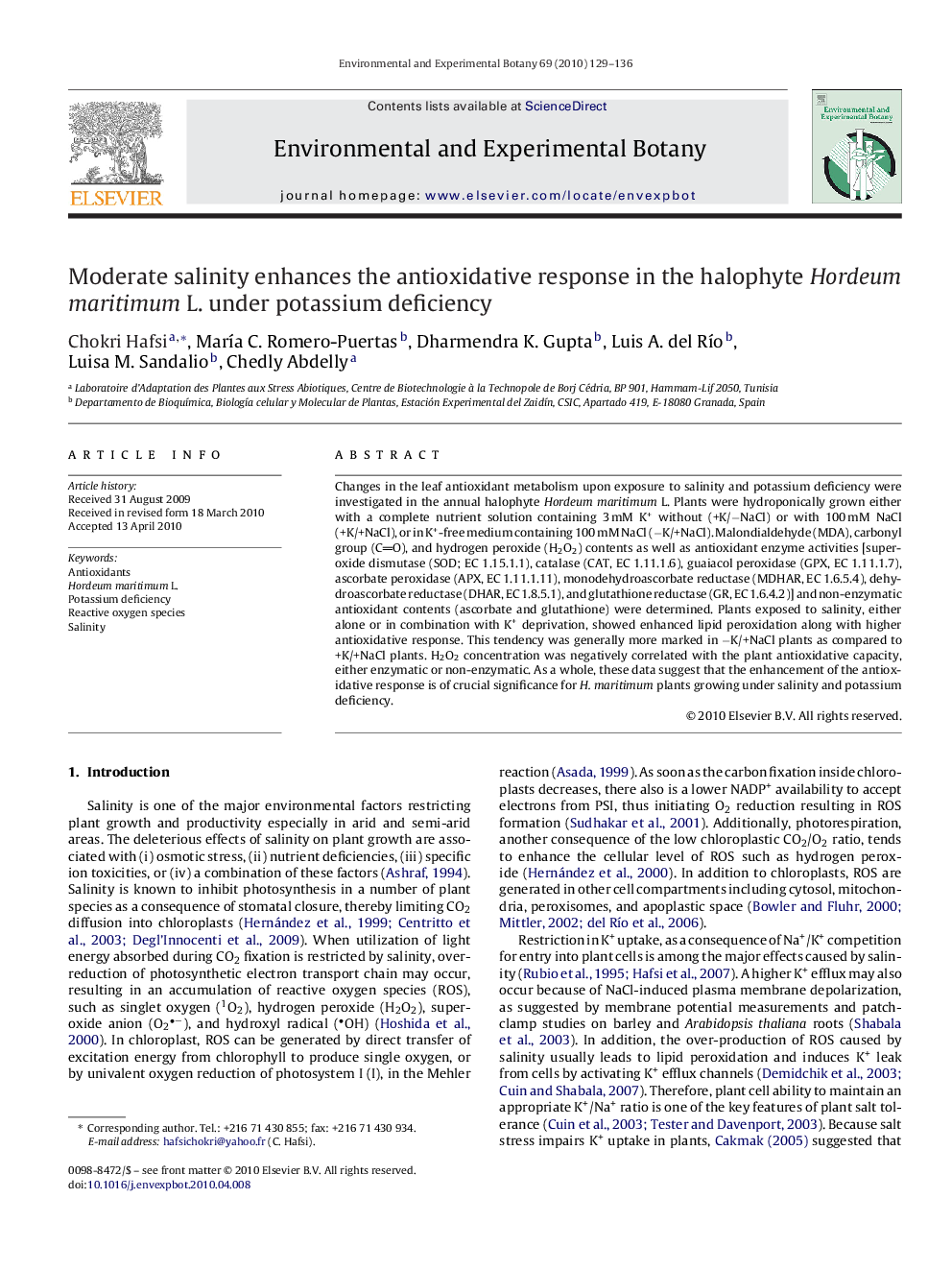| Article ID | Journal | Published Year | Pages | File Type |
|---|---|---|---|---|
| 4555256 | Environmental and Experimental Botany | 2010 | 8 Pages |
Abstract
Changes in the leaf antioxidant metabolism upon exposure to salinity and potassium deficiency were investigated in the annual halophyte Hordeum maritimum L. Plants were hydroponically grown either with a complete nutrient solution containing 3Â mM K+ without (+K/âNaCl) or with 100Â mM NaCl (+K/+NaCl), or in K+-free medium containing 100Â mM NaCl (âK/+NaCl). Malondialdehyde (MDA), carbonyl group (CO), and hydrogen peroxide (H2O2) contents as well as antioxidant enzyme activities [superoxide dismutase (SOD; EC 1.15.1.1), catalase (CAT, EC 1.11.1.6), guaiacol peroxidase (GPX, EC 1.11.1.7), ascorbate peroxidase (APX, EC 1.11.1.11), monodehydroascorbate reductase (MDHAR, EC 1.6.5.4), dehydroascorbate reductase (DHAR, EC 1.8.5.1), and glutathione reductase (GR, EC 1.6.4.2)] and non-enzymatic antioxidant contents (ascorbate and glutathione) were determined. Plants exposed to salinity, either alone or in combination with K+ deprivation, showed enhanced lipid peroxidation along with higher antioxidative response. This tendency was generally more marked in âK/+NaCl plants as compared to +K/+NaCl plants. H2O2 concentration was negatively correlated with the plant antioxidative capacity, either enzymatic or non-enzymatic. As a whole, these data suggest that the enhancement of the antioxidative response is of crucial significance for H. maritimum plants growing under salinity and potassium deficiency.
Related Topics
Life Sciences
Agricultural and Biological Sciences
Ecology, Evolution, Behavior and Systematics
Authors
Chokri Hafsi, MarÃa C. Romero-Puertas, Dharmendra K. Gupta, Luis A. del RÃo, Luisa M. Sandalio, Chedly Abdelly,
